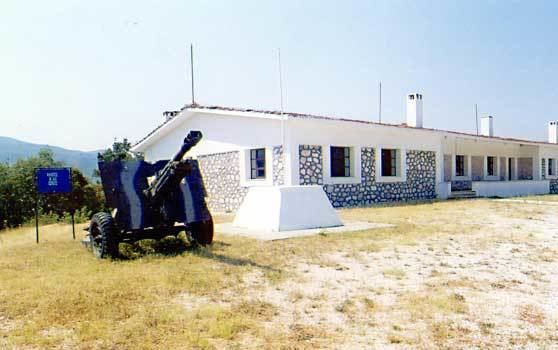Phone +30 2321 095100 | ||
 | ||
Hours Open today · 9AM–1:30PM, 3–5:30PMWednesday9AM–1:30PM, 3–5:30PMThursday9AM–1:30PM, 3–5:30PMFriday9AM–1:30PM, 3–5:30PMSaturday9AM–1:30PM, 3–5:30PMSunday9AM–1:30PM, 3–5:30PMMonday9AM–1:30PM, 3–5:30PMTuesday9AM–1:30PM, 3–5:30PM Similar Fort Istibey, Lake Kerkini, Angitis, Timiou Prodromou Monaster, War Museum of Thessaloniki | ||
Fort Roupel (Greek: Οχυρό Ρούπελ) is a fortress at the north border of Central Macedonia, Greece, built in 1914. It became part of the fortifications of the Metaxas Line in the 1930s and became famous for its defence during the German invasion of Greece in April 1941.
The Rupel fortifications are not far from the Serres-Promachonas national road, which leads to the Greek-Bulgarian border. They are just a short distance from the border in the narrow Rupel Gorge, through which the Strymon River flows. This place is of strategic importance for entry to Greek or Bulgarian territory and was fortified in 1914.
During World War I, on 25 May 1916, under German pressure, the Greek government ordered the surrender of the fortress to the Germans and their Bulgarian allies, without a shot being fired. The German-Bulgarian troops then proceeded to occupy most of eastern Macedonia without resistance. This act led to the outbreak of a revolt of Greek Army officers in Thessaloniki and the establishment of the Provisional Government of National Defence under Entente auspices there, opposed to the official Athens government and King Constantine I, cementing the so-called "National Schism".
The fort became famous during World War II, when the advance of the German and Bulgarian armies was stopped in front of this fort. On the eve of World War II, Fort Roupel was incorporated into the Metaxas Line, a new line of defence that was built to repel an invasion into Greece from Bulgaria. For three days the fort held out against German attack and was only abandoned by its men after the surrender of the Greek army in Thessaloniki.
Today one of the fortification's galleries is open to visitors, as is a small museum and the pavilion the visitors, the observatory and memorial of fallen soldiers. In the gallery, the visitor has the opportunity to feel the moments of the battle. Walking the wards and in the side aisles there are dioramas that depict the Greek fighters battle forts (gunner, doctor to doctor's caring for injured, the sergeant in his office and the office of captain and more
